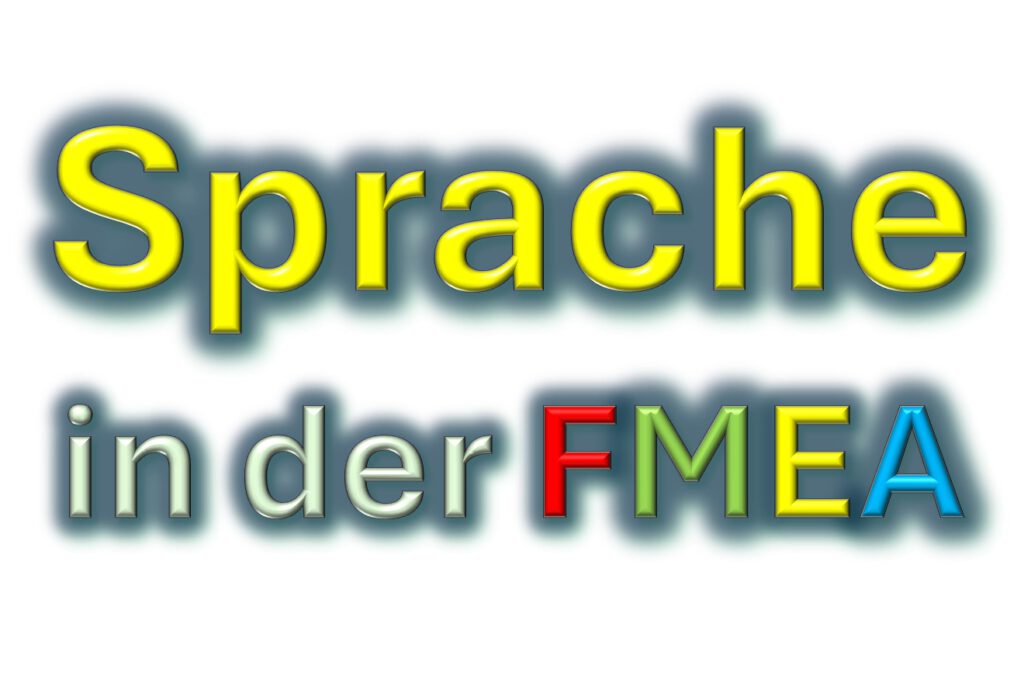
A blog by Dr. Uwe-Klaus Jarosch, September 2025
Have you read the first part of this blog ?
It is about language in FMEA – as used for functions and failures .
Here and today we will talk about language to meaningfully formulate actions in the FMEA.
In most FMEAs we have 2 types of action:
If we use a tool as well designed to create a control plan in conjunction with the PFMEA then a third type will be needed:
We formulate actions in the FMEA in order to get an effect:
Reduce the risk for a target to go wrong, for a described failure mode to become effective by effectively prevent this failure to happen or by detection of this failure, hindering to cause further damage.
The prerequisite for such a risk mitigation is: The actions are written in a way to be clear and unmistakable.
My recommendation is to strictly address and use actions as prevention and detection as needed in a closed loop circle.
To collect information, data, measurement values, may be to come to a decision, then I use detection actions (DA).
In preparation of a design or before a process can start I need to take prevention actions (PA). In the closed loop of a product development or a manufacturing process, prevention actions will control the process by use of the information collected by the detection action and help to keep the results stable.
The Reaction-Plan-Action (RPA) is only relevant in a process. We need to use DAs in the process as well. In most cases we use DAs for a decision: ok or NOK. For ok the process can proceed. For NOK a reaction is needed to keep the process going and to come back on track, to produce ok results as quick as possible. This type of actions will appear in the very right column of the production control plan.
kommt nur in einem Prozess zum Einsatz. Auch im Prozess werden Entdeckungsmaßnahmen verwendet. Meist führen sie zu einer Bewertung: Gut oder Schlecht. Für den Gut-Fall geht der Prozess weiter. Für den Schlecht-Fall muss es einen Reaktions-Plan geben, damit der Prozess nicht stockt und wieder dorthin zurück zu finden, wo die Ergebnisse i.O. sind. Diese Maßnahmen tauchen im Produktions-Lenkungsplan ganz rechts in der Spalte Reaktion auf.
Often I have experienced FMEA teams describing a detecting action and then classifying it as a prevention action with the argument to prevent something in the next step to happen.
My strict separtion will no longer work if you agree in such arguments.
In my view, it neither is a good strategy to advise the things that need to be done nor is it feasible to get a reasonable risk rating for occurrence and detection.
My Tip #1: Any kind of collection of knowledge or its rating (in the sense of a test or inspection result) is a detection action. Period.
Tip #2: Any kind of closed loop circle, what is a measurement of the current state plus the utilization of this information for a development loop or for process parameter improvement is a combination of a DA and a PA, two joint actions.
Tip #3: If it is a well working closed-loop circle the detection and prevention are of the same level of quality, to be rated with equal values for O and D. If either detection is bad or the the controller does not work properly then the closed loop circle will not deliver good results. In consequence we see the need for additional design loops, a non working design or too much rework and scrap in production.
Let us come back to language.
Actions are “instructions to do something”.
Therefore, actions should describe a doing in the text.
Which object needs to be handled in which way?
It needs a specific instruction.
The action will be assigned to a potential failure mode in order to prevent or detect exactly this failure mode.
There may be lots of visual inspections in product development or process. – What exaclty is the matter, the way and the criterium to be inspected here ?
An action without responsible person and without due date typically will not happen.
The definition who is facilitating this action until when is essential for success.
How can we distinguish types of actions by phrasing?
There are key words expressing what is the essential doing by this action.
Conclusions:
Final tip: Even more in detail as in this blog I was able to write down the preparation of actions in my book „Vorausplanen“ in chapters 7.6.5, 7.9.5 und 7.9.6 . There you find lists of examples for PAs and DAs in design and process.
Stay curious
Uwe Jarosch
Um Ihnen ein optimales Erlebnis zu bieten, verwenden wir Technologien wie Cookies, um Geräteinformationen zu speichern und/oder darauf zuzugreifen. Wenn Sie diesen Technologien zustimmen, können wir Daten wie das Surfverhalten oder eindeutige IDs auf dieser Website verarbeiten. Wenn Sie Ihre Zustimmung nicht erteilen oder zurückziehen, können bestimmte Merkmale und Funktionen beeinträchtigt werden.